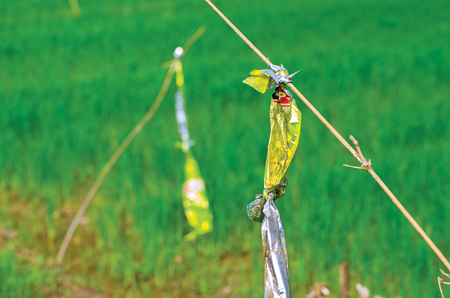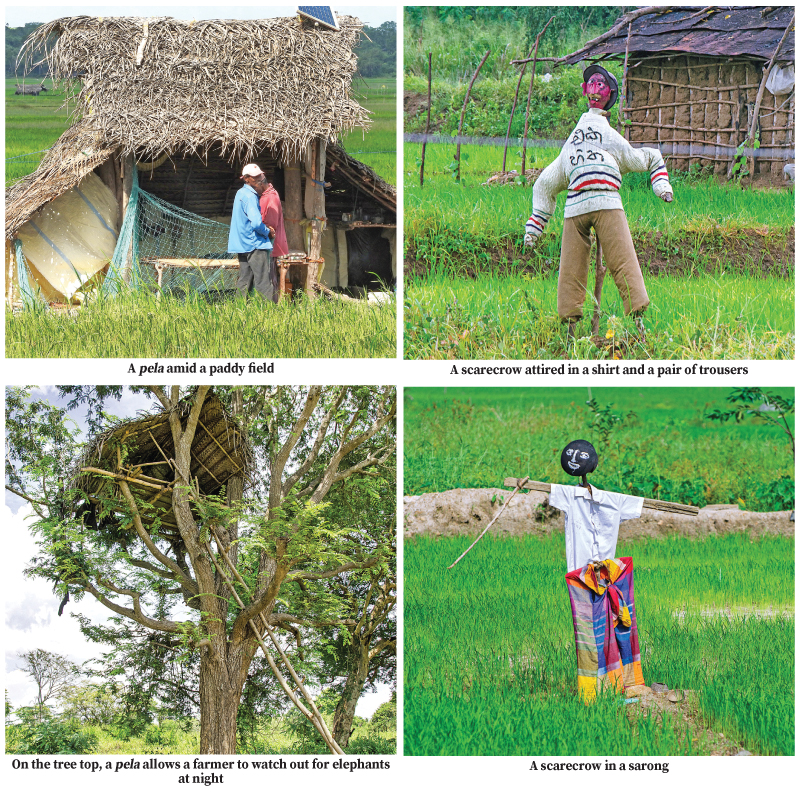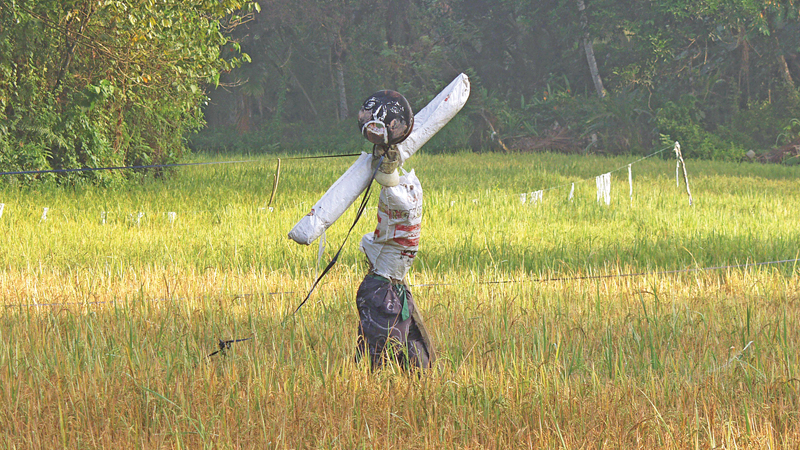 Crop damage by wild animals in Sri Lanka including paddy, coconut and vegetables, results in an overall loss of millions of rupees annually. It intensifies the food shortage the country is facing today.
Crop damage by wild animals in Sri Lanka including paddy, coconut and vegetables, results in an overall loss of millions of rupees annually. It intensifies the food shortage the country is facing today.
The toque macaque tops the list of crop raiders followed by wild boar, elephant, peafowl, giant squirrel and porcupine with five types of crops most heavily damaged: coconuts, paddy, vegetables, corn and bananas. Experts in agriculture and animal conservation recommend a data-driven, science-based approach to solve the problem before it escalates further.
Toque macaques and giant squirrels cause the worst damage to coconuts which is the worst-affected crop, while elephants, wild boars and peafowl mainly target paddy, Sri Lanka’s staple food. Porcupines tend to damage young coconut plants and vegetables. The intensification of human-elephant conflict is also linked to crop raiding. Elephants cause substantial crop damage, especially to paddy and bananas.
As the problem of crop damage by animals is intensifying in some parts of the country, I peep into the farmer’s old method of chasing birds and animals from their paddy fields. Travelling around the country, I have seen farmers display various types of scarecrows in their paddy fields to chase away the animals.
Make-shift figurines

Bright colour pieces of luminous polytene – another method
seen in paddy fields to keep animals at bay
Amid the lush green paddy fields and vegetable cultivations islandwide, guardians stand at attention. Yet, looking closer, it is apparent that these are not humans at all, but makeshift figurines that have been used since bygone days to protect paddy fields and vegetable gardens from hungry birds and animals.
While many new innovations may have been introduced at times, it seems the most effective are the simpler methods that were used in the past. The scarecrow is made in the form of a human to protect fields and crop from birds who would be frightened away thinking that it was the farmer. From afar, these mannequins, attired in various outfits, do look like humans.
The body of the scarecrow is made of straw. It is then dressed in shirts and trousers. The face too is at times made of straw and then covered with material and a cap or hat to cover. Alternatively, a clay pot or muttiya may also be used as the head. Thereafter, the figure is supported on a wooden frame to keep the scarecrow straight and tall.
Varied forms
As we journeyed along the Polonnaruwa–Welikanda road, we came across scarecrows dressed in shirts with clay pots as heads carrying bags and other utensils or tools; similar to a farmer going to work. Another was all in white, wearing trousers and a cap on top, looking quite smart in appearance.
Some took on amusing forms, with disproportionate figures, and at times, no face but a simple cap on top.
At one point, we even mistook a scarecrow for a person, but when we looked closer, we realised our mistake. This scarecrow had an umbrella as well. Some scarecrows were dressed in striking colours such as red and green, and would definitely make birds and animals think twice before swooping down on the paddy field.
Similarly, other traditional methods are also utilised to ward off birds, such as old tin cans that are stringed together on wire fences. Thus, when birds perch on the wire, or an elephant passes through, the tins clatter and clang, warning both animal and man.
Rattling sound
A row of tin cans creates a rattling sound even in the present-day farmers watch over their paddy fields at night. They stay in tree houses or pela and as an elephant approaches, they will either flash a torch or make a loud noise.
While one may think that only human figures are used as scarecrows, another interesting method used in paddy fields to ward off birds from littering or stealing food, is to place a hand-made figure of a crow. At first, one would assume it is an actual bird, but only when you take a closer look that you realise that the bird is literally a ‘scarecrow’.
Some farmers display bright colour pieces of luminous polytene all over their paddy fields to chase away animals. Reconnecting with the past reflects the timelessness of these ingenious and nature friendly methods, an inheritance of knowledge from our ancestors. It is indeed refreshing to see these simple features of daily life that are invaluable traditions.







